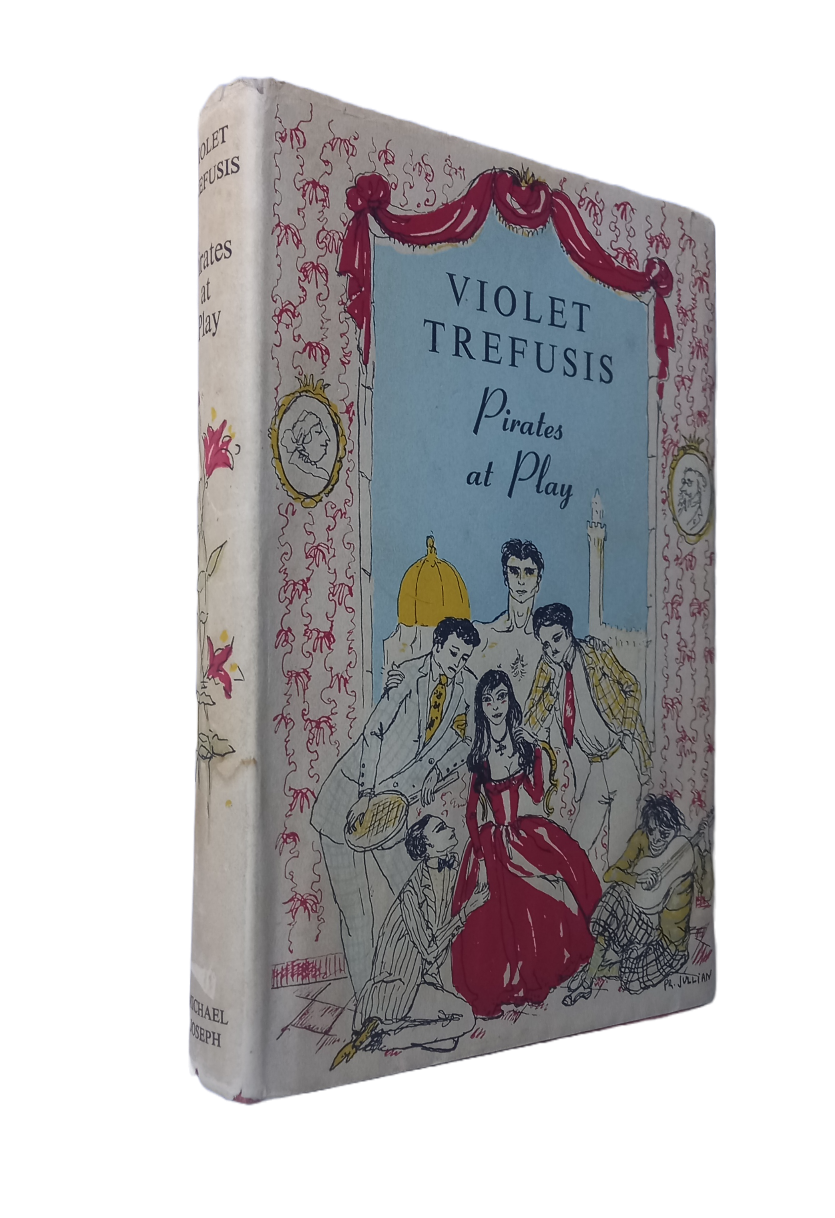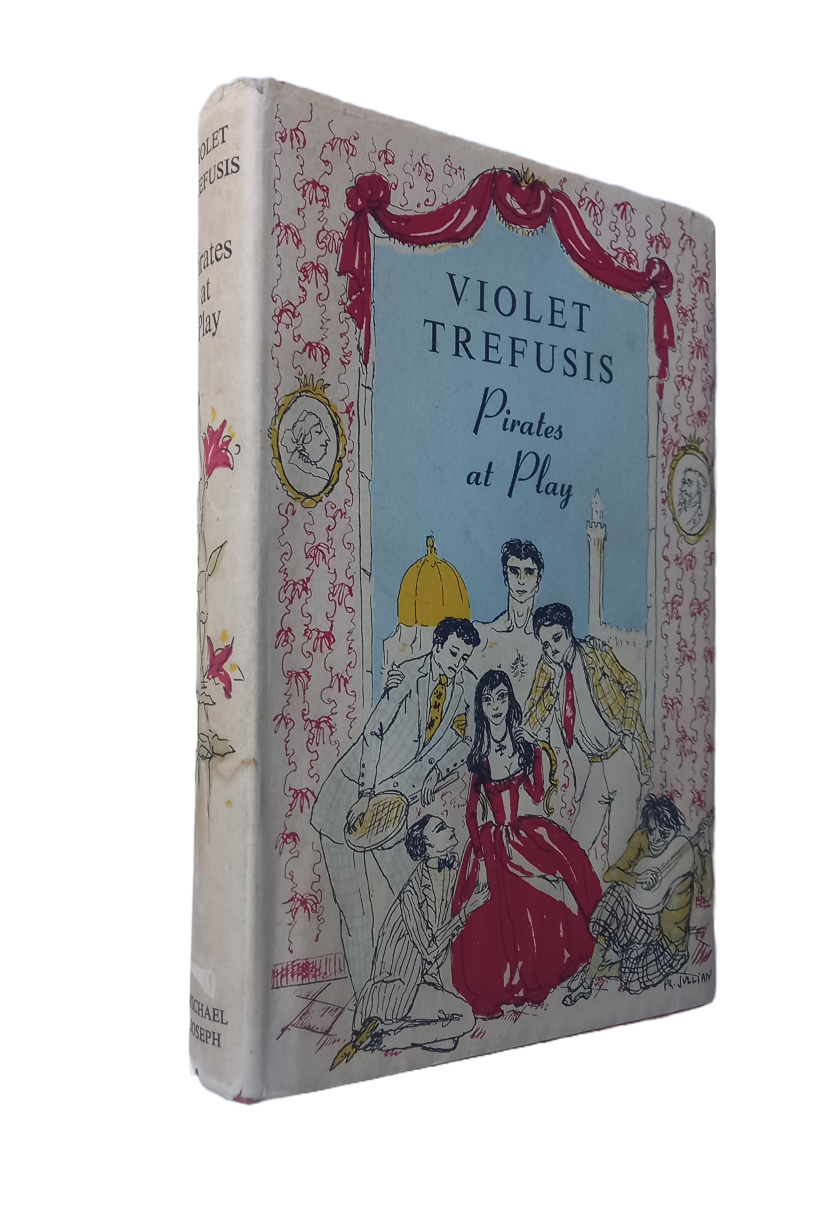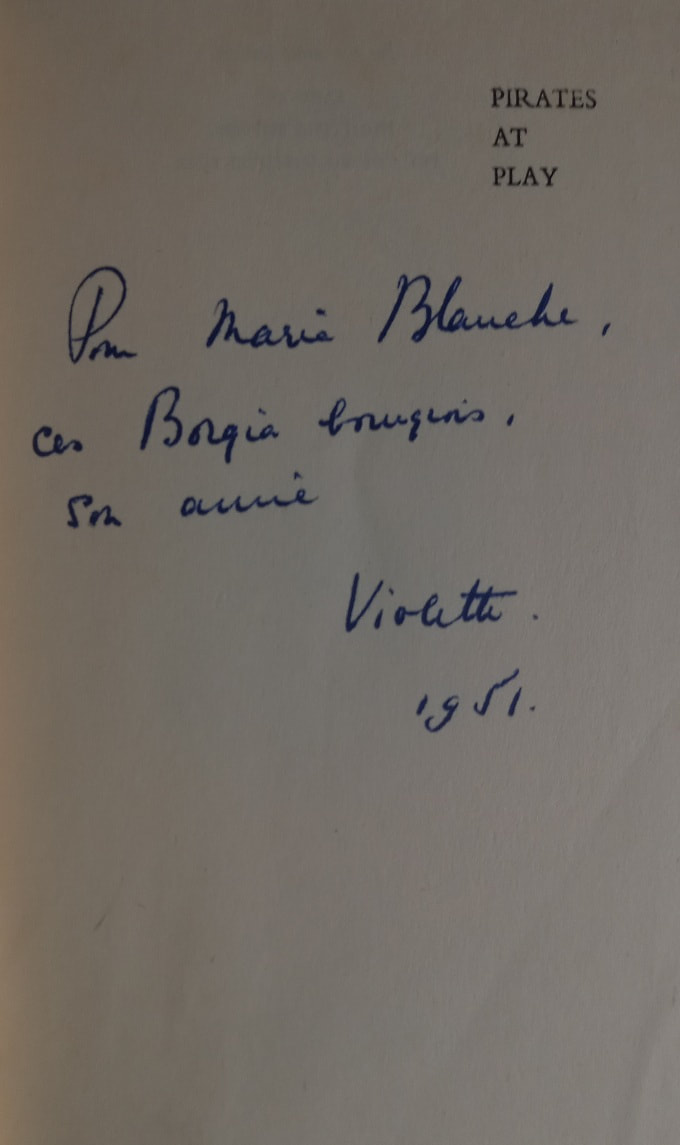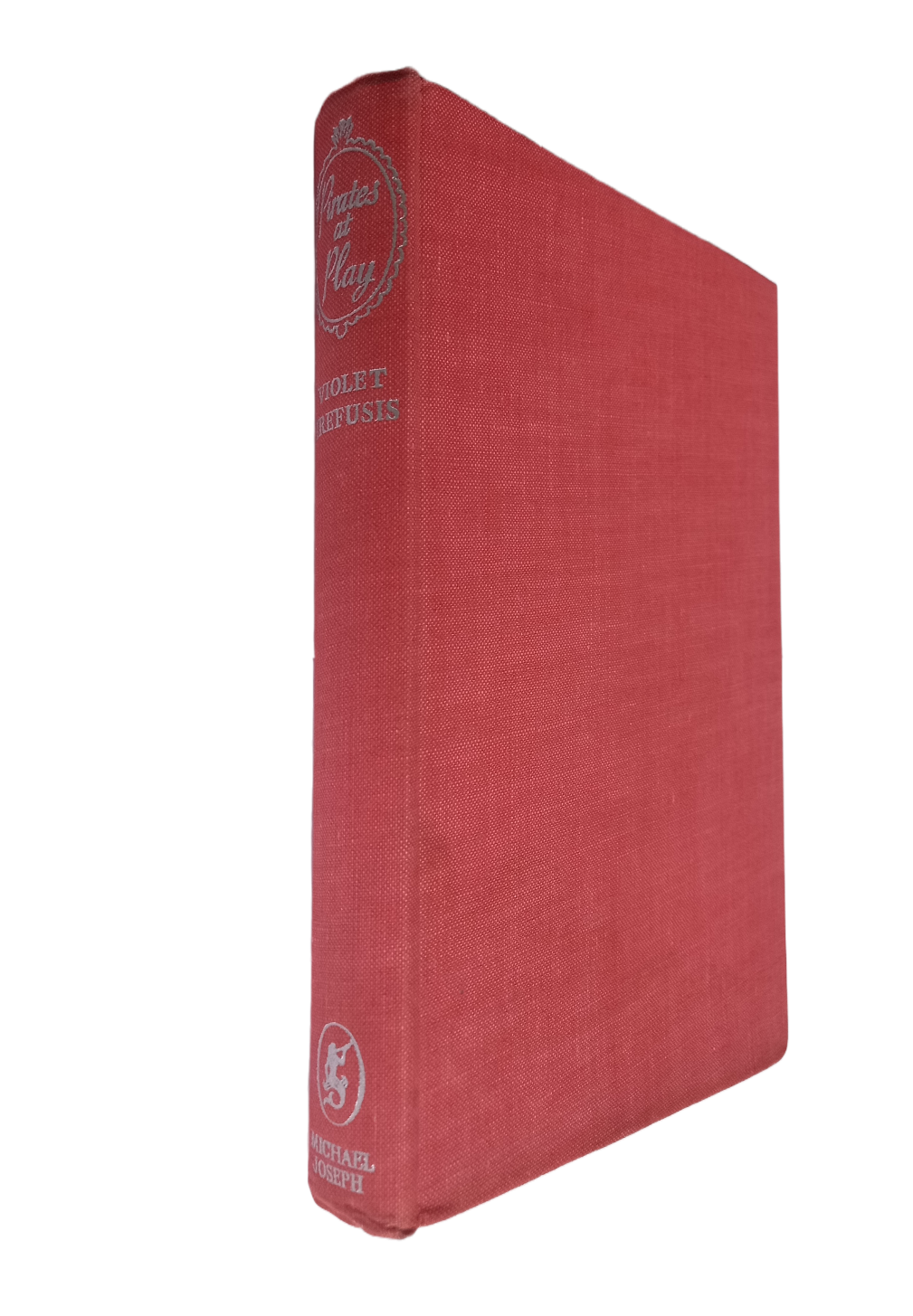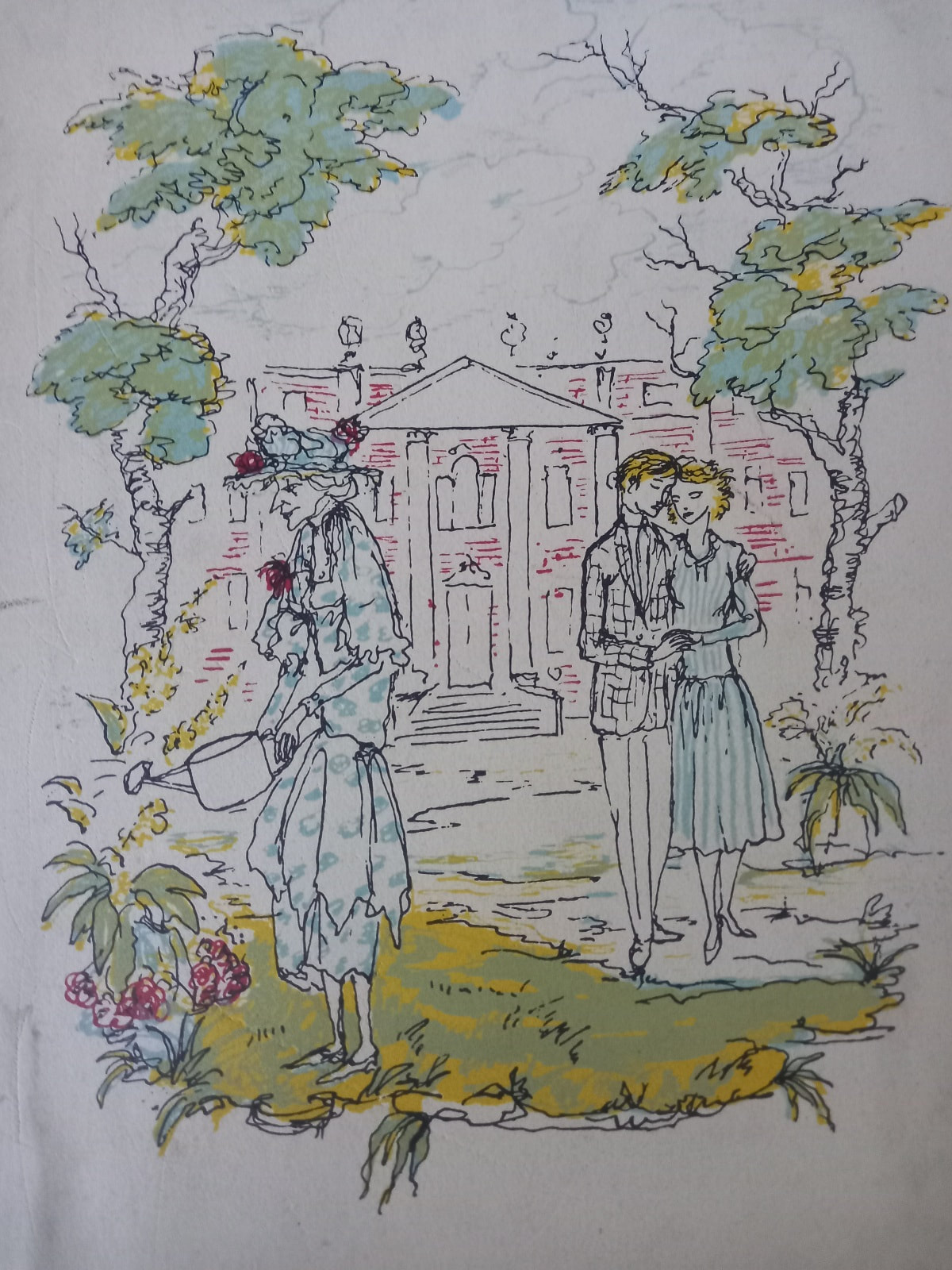- Literature
- >
- Pirates at Play by Violet Trefusis (Presentation Copy)
Pirates at Play by Violet Trefusis (Presentation Copy)
TREFUSIS, Violet. Pirates at Play. London: Michael Joseph, 1950.
Third impression. The author's final novel in English, this is the story of a band of handsome Florentines on the lookout for rich mistresses. Violet Trefusis (1894-1972) is one of a handful of English authors who have written equally elegantly in English and in French - she wrote five novels in English, and four in French. Violet was the daughter of Alice Frederica Keppel, mistress of King Edward VII, and great-grandmother of Queen Camilla. As a young woman, Violet had a passionate love affair with Vita Sackville-West, and she was the inspiration for Princess Sasha in Virginia Woolf's Orlando.
Presentation copy, inscribed in French by the author to her friend, Marie-Blanche de Polignac: ‘Pour Marie Blanche, ces Borgia bourgeois, son amie, Violette’.
Marie-Blanche (1897-1958) was the daughter of the French fashion designer Jeanne Lanvin, and the niece of Violet’s lover, the great musical patron Winaretta Singer, Princesse de Polignac. Marie-Blanche was a gifted pianist and soprano, who performed on international concert stages with the Nadia Boulanger Ensemble. Among the group's most successful pieces were the Monteverdi Madrigals, with Marie-Blanche singing “Lamento della ninfa”. In 1937 the Boulanger Ensemble recorded the Monteverdi Madrigals for commercial release on HMV’s Red Label series. The album proved an instant success, and in the long run proved to be of immense importance in arousing public interest in early music.
8vo, original cloth. 232 pp. Old faint stain to bottom of boards, pastedowns, and inside the dust jacket (slight edge-wear; 2 small tape repairs to inside dust jacket; spine lightly browned; in clear, removable protective sleeve). A good but still very attractive copy in the dust jacket illustrated by Philippe Jullian.

